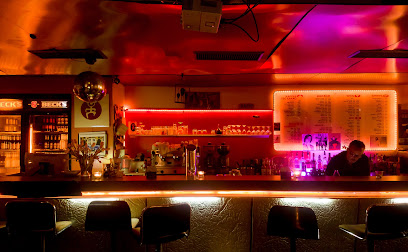
Barfüßerkirche: A Testament to Erfurt's History
Explore the haunting beauty of Erfurt's Barfüßerkirche, a medieval Franciscan monastery church partially destroyed in WWII, now a museum and performance venue.
The Barfüßerkirche, or Discalced Church, stands as a poignant reminder of Erfurt's rich history and the ravages of World War II. Originally built in the 14th century as a Franciscan monastery church, it was one of the most significant mendicant churches in Germany. Though largely destroyed by bombing in 1944, the restored choir houses a museum of medieval art, including stunning 13th-century stained glass. The haunting ruins of the nave offer a unique glimpse into Gothic architecture and the enduring spirit of Erfurt. Located near the Schlösserbrücke bridge, it's a must-see for history buffs and art enthusiasts alike. Martin Luther himself preached here, adding to its historical significance. Today, the Barfüßerkirche serves as a venue for theatrical performances, blending history with contemporary culture. A visit offers a powerful reflection on the past and a celebration of resilience.
A brief summary to Barfüßerkirche
- Barfüßerstraße 20, Erfurt, Altstadt, 99084, DE
- +493616551651
- Visit website
Local tips
- Check the Angermuseum's website for current opening hours and special exhibitions at the Barfüßerkirche, as they can vary.
- Combine your visit with a walk across the nearby Krämerbrücke, a unique medieval bridge lined with shops and houses.
- Attend a theatrical performance at the Barfüßerkirche for a unique cultural experience within the historic ruins.
Getting There
-
Walking
From Erfurt's Anger, a central square, walk west along the Bahnhofstraße, then turn left onto the Schlösserstraße. Cross the Schlösserbrücke bridge. The Barfüßerkirche will be immediately on your right. The walk is approximately 5-10 minutes. No costs involved.
-
Public Transport
Take tram line 2 from Erfurt Hauptbahnhof (main train station) to the Angerbrunnen stop. From there, walk west along the Schlösserstraße, cross the Schlösserbrücke bridge. The Barfüßerkirche will be immediately on your right. A single tram fare is approximately €2.50.
-
Taxi/Ride-Share
A taxi or ride-share from Erfurt Hauptbahnhof to the Barfüßerkirche will take approximately 5-10 minutes, depending on traffic. Expect to pay around €8-€12. The driver should take you via the city center to Barfüßerstraße 20.
-
Driving
Driving directly to the Barfüßerkirche is possible, but parking is limited in the immediate vicinity. The closest parking options are the Forum or Anger 1 multi-story car parks. Hourly parking rates typically range from €2-€3, with daily maximums around €15-€20. Be aware that these car parks can fill up quickly, especially during peak tourist season.
Discover more about Barfüßerkirche
Iconic landmarks you can’t miss
Barfüßerkirche
0.0 km
Explore the haunting beauty of Erfurt's Barfüßerkirche, a medieval Franciscan monastery church partially destroyed in WWII, now a museum and performance venue.
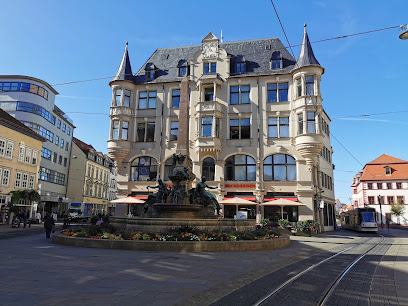
Breitstrom Castle Bridge
0.1 km
Discover Erfurt's Breitstrom Castle Bridge: A picturesque pedestrian bridge offering serene views and a glimpse into the city's rich history in the heart of the Altstadt.
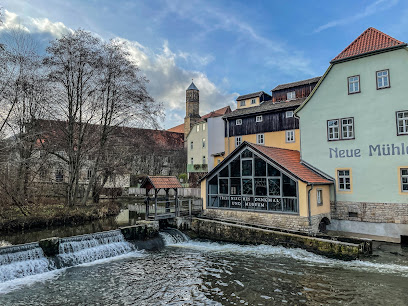
Erfurt Altstadt
0.3 km
Discover Erfurt Altstadt: A captivating blend of medieval charm, historical treasures, and vibrant culture in the heart of Germany, offering an unforgettable travel experience.
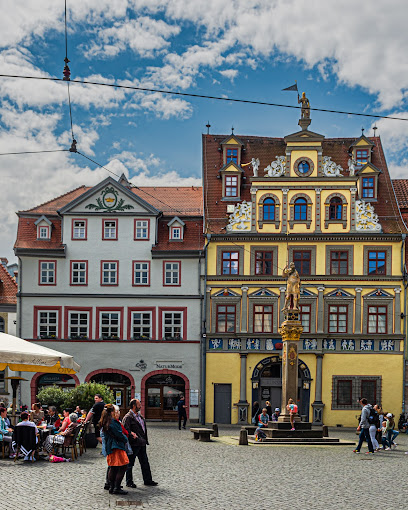
Maus und Elefant KIKA
0.3 km
Meet Maus and Elefant, the iconic characters from 'Die Sendung mit der Maus,' in Erfurt's heart, a whimsical tribute to German children's television and the city's media connection.
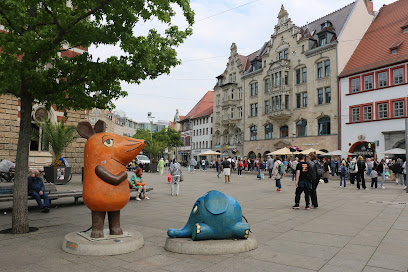
Stadtmauerrest
0.3 km
Discover Erfurt's medieval past at the Stadtmauerrest, a preserved section of the city's historic fortifications, offering a glimpse into its strategic importance and enduring heritage.
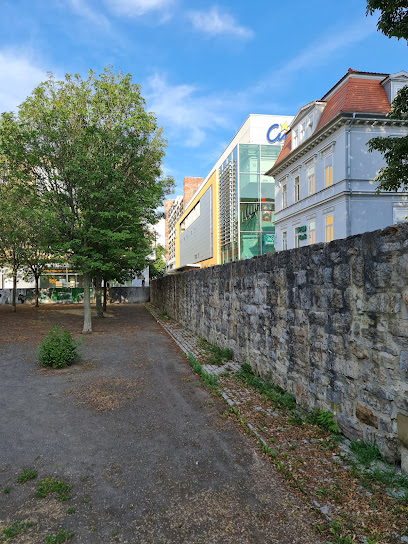
Kramer bridge
0.4 km
Discover the Krämerbrücke in Erfurt, a medieval marvel and Europe's longest inhabited bridge, offering artisan shops, rich history, and unique architecture in the heart of Thuringia.
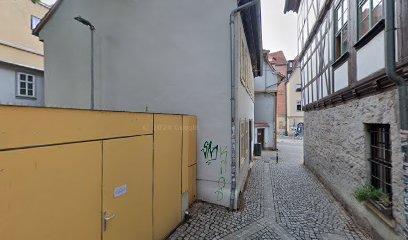
Brunnen Bremer Stadtmusikanten
0.4 km
A whimsical fountain in Erfurt's Old Town, inspired by the Brothers Grimm fairy tale, depicting the Bremen Town Musicians and symbolizing hope and friendship in the heart of the city.
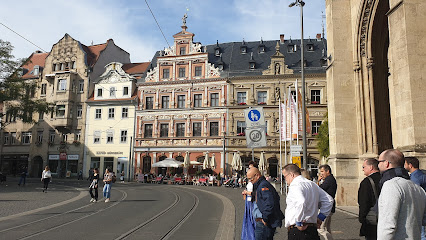
Luther-Denkmal
0.4 km
Discover the legacy of Martin Luther at the Luther Monument in Erfurt, a tribute to the Reformation's impact on religion, culture, and history.
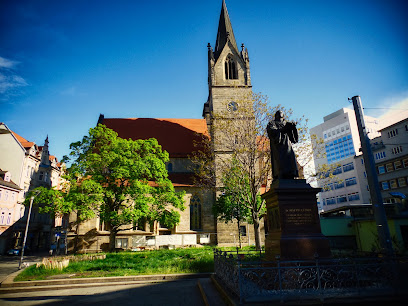
Dämmchen
0.5 km
Discover Dämmchen in Erfurt: A serene island escape behind the Krämerbrücke, offering picturesque views, historic charm, and a tranquil atmosphere in the heart of the Altstadt.
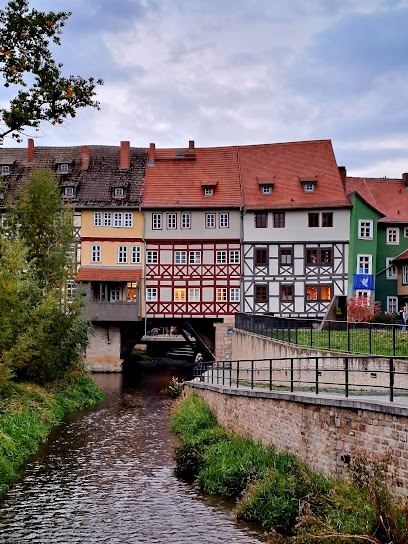
Herrmann's fountain
0.6 km
Discover the beauty and history of Herrmann's Fountain, a stunning landmark in the heart of Erfurt's Altstadt, perfect for photos and relaxation.
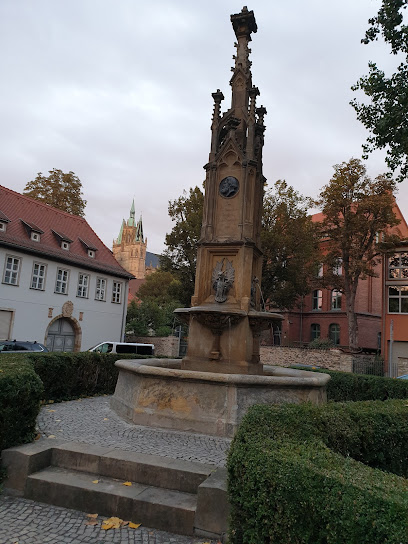
Georgenburse
0.6 km
Explore Martin Luther's student residence in Erfurt's historic Georgenburse, an educational center and pilgrim hostel offering insights into medieval academic life and the Reformation era.
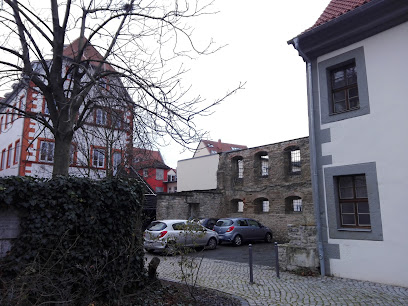
Memorial and Educational Site Andreasstraße
0.6 km
Explore the chilling history of East Germany's SED dictatorship at the Memorial and Educational Site Andreasstraße in Erfurt, a former Stasi prison transformed into a powerful museum.
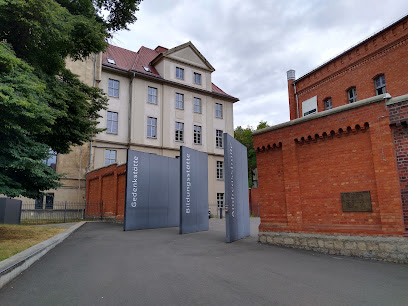
Protestant Augustinian Monastery Erfurt
0.6 km
Explore the historic Augustinian Monastery in Erfurt, where Martin Luther lived and shaped the Reformation. A site of spiritual significance and architectural beauty.
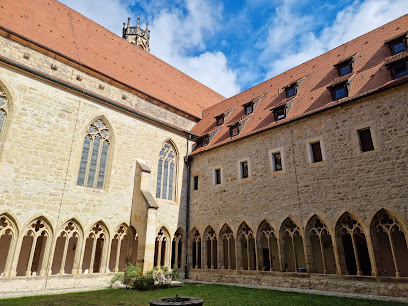
Stadtmauer Am Rosswehr
0.7 km
Discover Erfurt's medieval past at Stadtmauer Am Rosswehr, a preserved city wall offering a glimpse into the city's rich history and strategic importance.
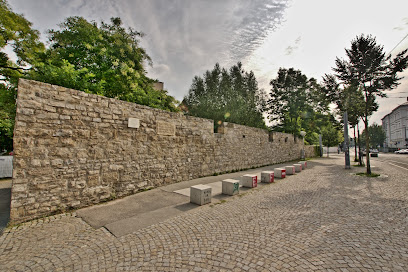
Bepflanzter Schriftzug Erfurt
0.7 km
Discover Erfurt's floral heart: the Bepflanzter Schriftzug welcomes you to a city of gardens, history, and charm, offering a vibrant and unforgettable experience in the heart of Thuringia.
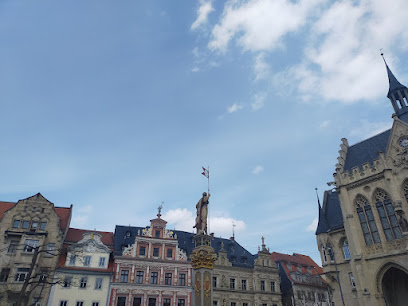
Unmissable attractions to see
Bartholomäusturm
0.1 km
Explore the historical Bartholomäusturm in Erfurt, a captivating museum and architectural marvel showcasing the city's rich cultural heritage.
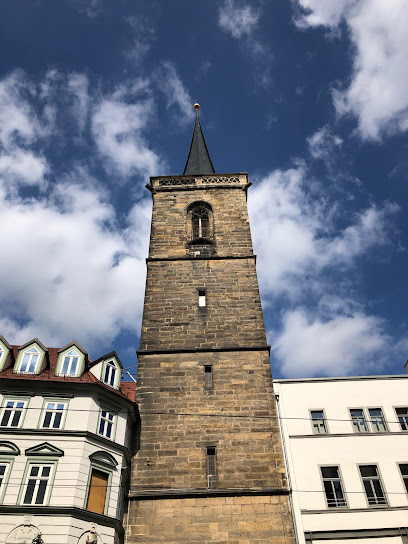
Hirschgarten
0.2 km
Explore Hirschgarten: A serene state park in Erfurt, perfect for family outings, nature walks, and peaceful retreats amidst lush greenery.
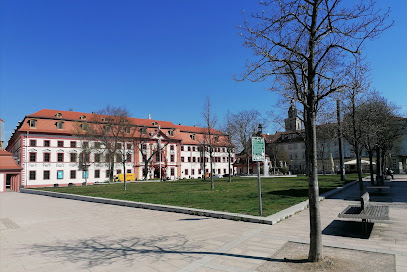
Skulptur
0.3 km
Explore the Skulptur in Erfurt, a captivating blend of contemporary art and urban culture, set in the historic heart of the city.
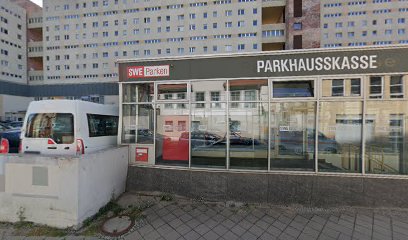
Der Römer
0.3 km
Explore Der Römer, a breathtaking historical landmark in Erfurt, showcasing rich heritage and stunning architecture in the heart of the city.
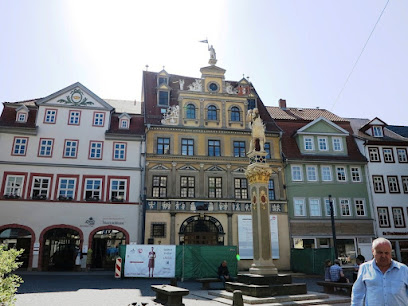
Erfurter Römer
0.3 km
Experience the historical allure of Erfurter Römer, where the majestic Roland statue stands as a symbol of freedom in the heart of Erfurt's Altstadt.
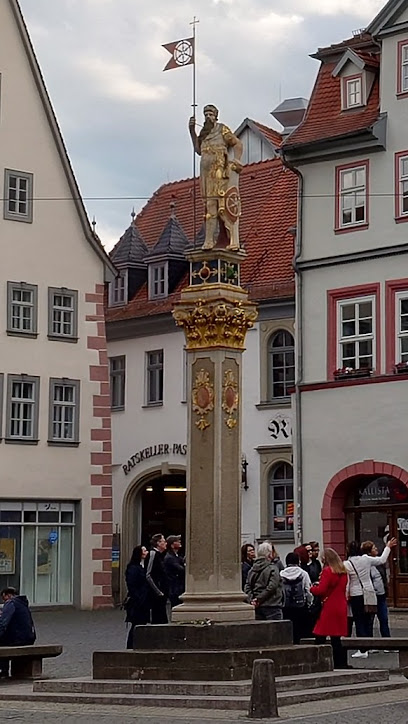
Fischmarkt
0.3 km
Experience the lively market atmosphere and historical charm of Fischmarkt in Erfurt, a must-visit destination for every traveler.
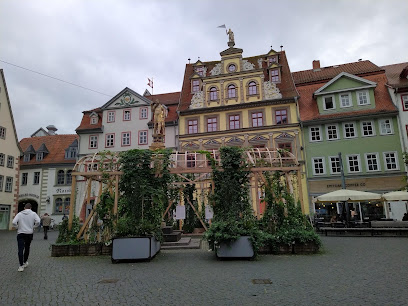
Kleine Synagoge
0.3 km
Discover the rich Jewish history of Erfurt at the Kleine Synagoge, a serene cultural gem showcasing the city's diverse heritage.
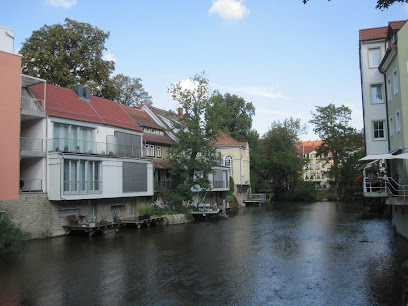
Erfurt City Hall
0.3 km
Discover the rich history and stunning architecture of Erfurt City Hall, a must-visit landmark in the heart of Erfurt's charming Fischmarkt square.
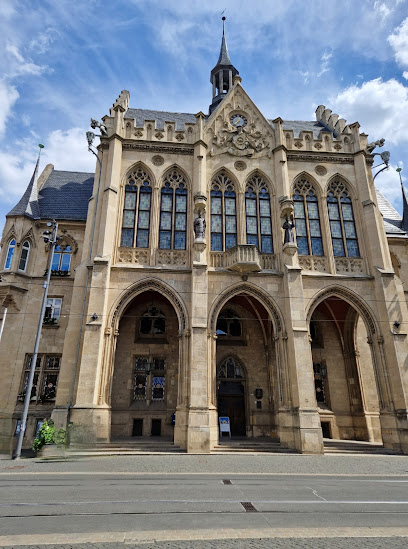
Ground plan of Erfurt center
0.3 km
Discover the vibrant charm of Fischmarkt in Erfurt, a historic square with stunning architecture and local culinary delights.
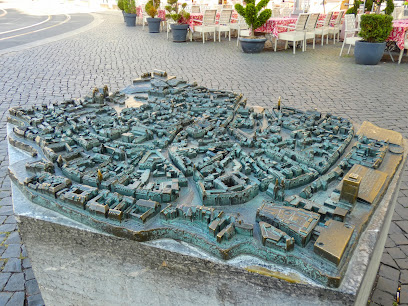
Bernd the bread
0.3 km
Discover the enchanting world of Bernd the Bread in Erfurt, where culinary creativity meets delightful baked goods in a family-friendly atmosphere.
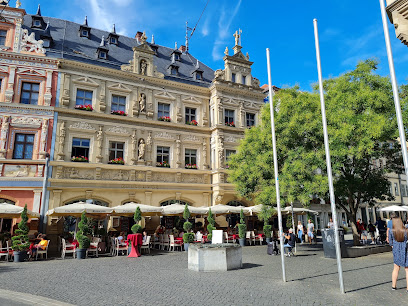
Naturkundemuseum
0.3 km
Discover the natural history of Erfurt at the Naturkundemuseum, where engaging exhibits reveal the wonders of biodiversity and geology.
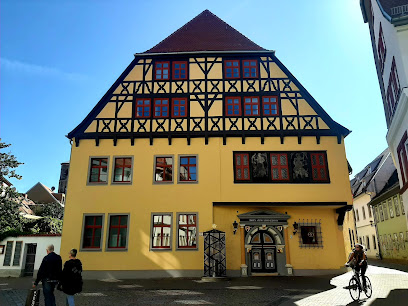
Zum Breiten Herd
0.3 km
Explore the historical richness of Erfurt at Zum Breiten Herd, a captivating landmark filled with culture and charm in the heart of the city.
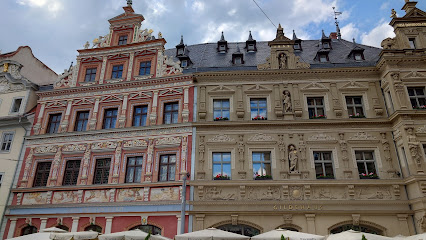
Old Synagogue
0.4 km
Explore the Old Synagogue in Erfurt - a captivating museum revealing the rich Jewish heritage and history of the region.

Krämerbrücke
0.4 km
Discover Krämersbrücke, the historic bridge in Erfurt lined with charming shops, cafes, and stunning medieval architecture.
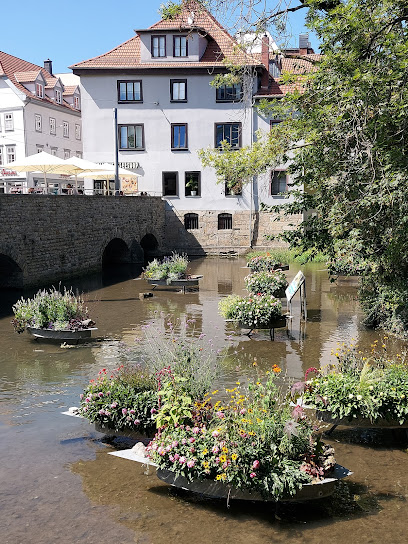
Wenigemarkt
0.4 km
Experience the charm of Wenigemarkt, Erfurt's historic market square, where culture, food, and tradition come together to create unforgettable memories.
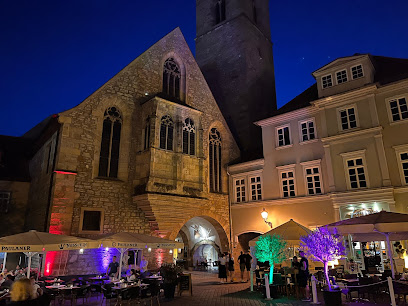
Essential places to dine
EAT Erfurt
0.3 km
Discover soulful flavors at EAT Erfurt, where traditional comfort food meets modern culinary artistry in Germany's picturesque city.

Restaurant Fellini
0.3 km
Discover authentic Italian cuisine at Restaurant Fellini in Erfurt's charming Altstadt – perfect for food lovers seeking delicious flavors.
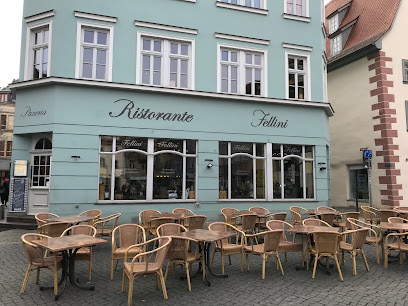
Kromer's Restaurant & Gewölbekeller
0.3 km
Discover the heart of German culinary tradition at Kromer's Restaurant & Gewölbekeller in Erfurt - where flavor meets history.
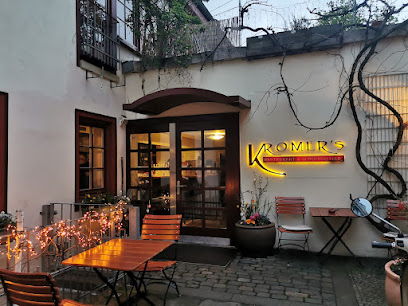
Kokono Restaurant Erfurt
0.3 km
Experience exquisite Pan Asian flavors at Kokono Restaurant in Erfurt – where tradition meets modern culinary art.
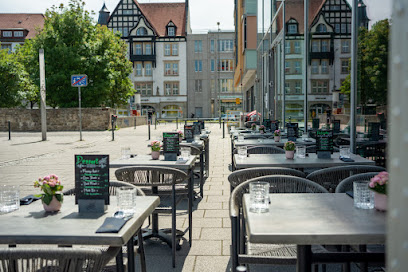
Ristorante Pavarotti
0.3 km
Experience authentic Italian cuisine at Ristorante Pavarotti in Erfurt – where every dish is crafted with passion and tradition.
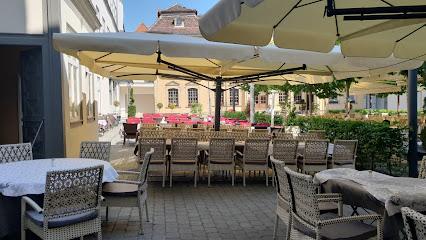
Pier 37 - Genuss am Fluss
0.3 km
Discover exquisite German cuisine at Pier 37 - Genuss am Fluss in Erfurt; where local flavors meet stunning riverside views.
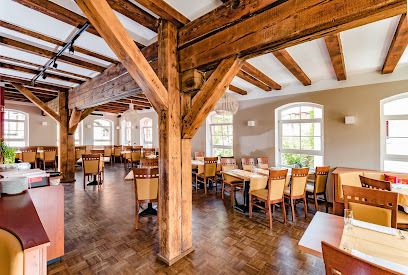
„Übersee“ Restaurant, Café & Bar
0.3 km
Experience culinary excellence at Übersee Restaurant, Café & Bar – your go-to destination for delightful meals and refreshing drinks in Erfurt.
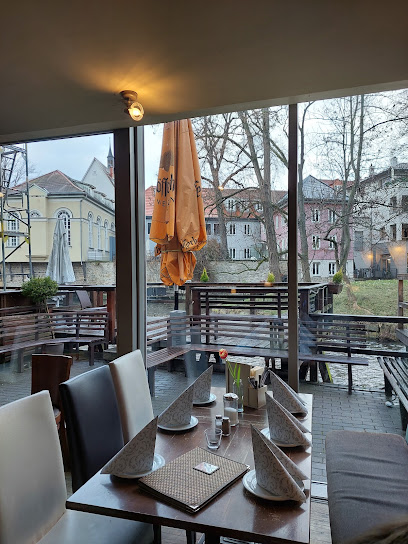
Zum güldenen Rade
0.3 km
Experience authentic Thuringian cuisine at Zum güldenen Rade in Erfurt – where tradition meets taste in a cozy atmosphere.
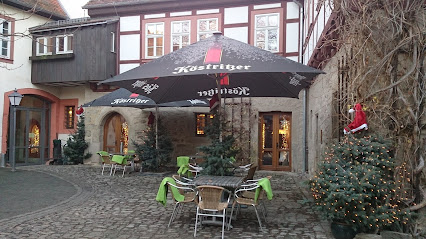
Zum Wenigemarkt 13
0.4 km
Experience authentic Thuringian flavors in Erfurt's historic Altstadt at Zum Wenigemarkt 13 - where tradition meets taste.
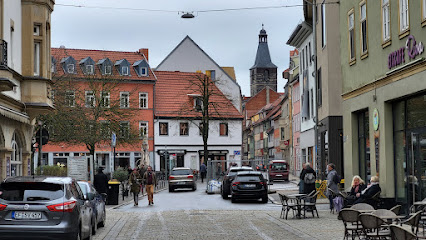
Haus zum Naumburgischen Keller
0.4 km
Experience authentic German and Thuringian cuisine at Haus zum Naumburgischen Keller, complete with an inviting beer garden in Erfurt's historic Altstadt.
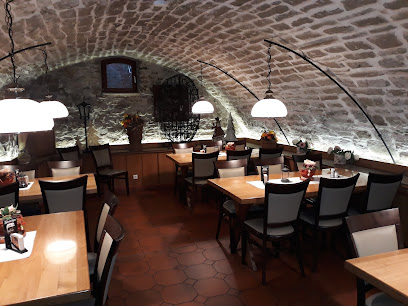
Gasthaus Feuerkugel
0.4 km
Discover authentic German flavors at Gasthaus Feuerkugel in Erfurt - a culinary gem offering traditional dishes in a charming setting.
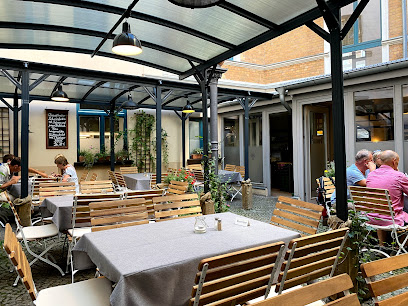
Restaurant Schnitzler Erfurt
0.4 km
Experience authentic German flavors at Restaurant Schnitzler in Erfurt's charming Altstadt, where tradition meets taste.
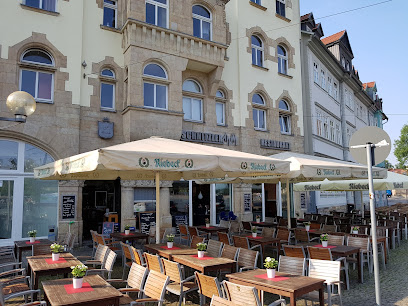
ESTIMA by Catalana | Casual Fine Dining Restaurant
0.4 km
Discover the exquisite flavors of fine dining at ESTIMA by Catalana in Erfurt's historic Altstadt - an unforgettable culinary journey awaits you.
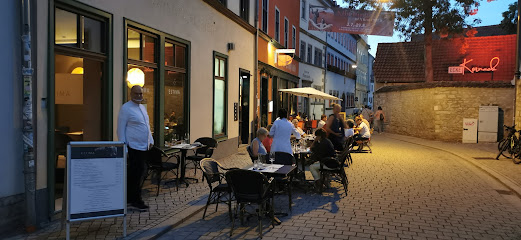
Roter Elephant Café & Restaurant - Erfurt
0.4 km
Experience culinary delights at Roter Elephant Café & Restaurant - A perfect blend of comfort and flavor in Erfurt's historic Altstadt.
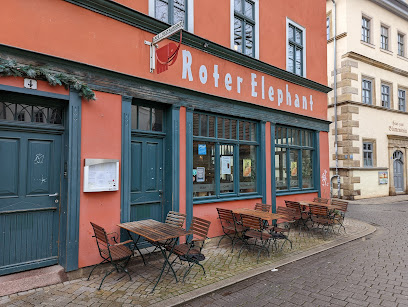
Palais Restaurant
0.4 km
Experience exquisite German cuisine at Palais Restaurant in Erfurt – where culinary artistry meets elegance.

Markets, malls and hidden boutiques
Cado Exclusive
0.1 km
Explore Cado Exclusive in Erfurt for the latest in contemporary fashion, blending style and quality in the heart of the city.
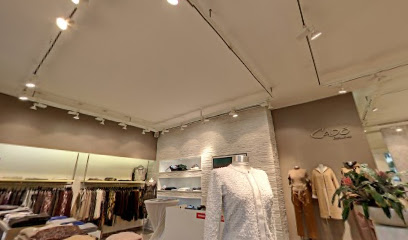
STRIKE Store
0.1 km
Explore the charm of vintage fashion in Erfurt at STRIKE Store, where every piece tells a unique story.

Oxfam Shop Erfurt
0.1 km
Explore Oxfam Shop Erfurt for unique thrift finds, from fashionable clothing to treasured books, all while supporting a charitable cause.
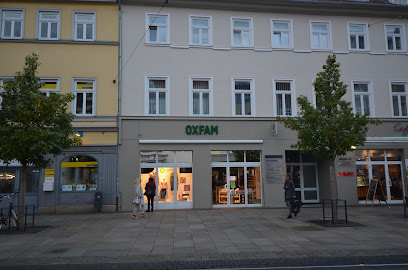
C&A
0.1 km
Discover stylish clothing for the whole family at C&A in Erfurt, where fashion meets affordability in a vibrant shopping atmosphere.
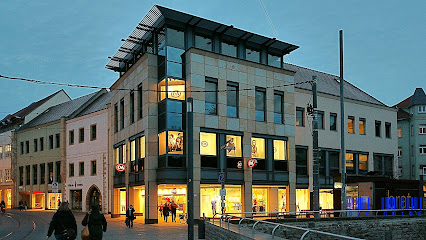
Zara
0.2 km
Explore Zara in Erfurt for trendy clothing and a stylish shopping experience in the heart of the city.
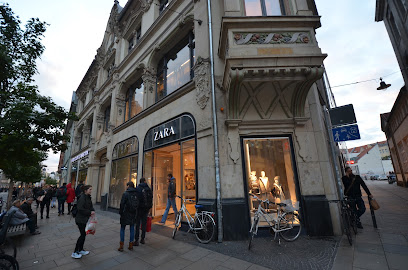
Breuninger Erfurt
0.2 km
Explore the fashion-forward Breuninger Erfurt, a premier department store offering a variety of clothing and accessories in the heart of the city.
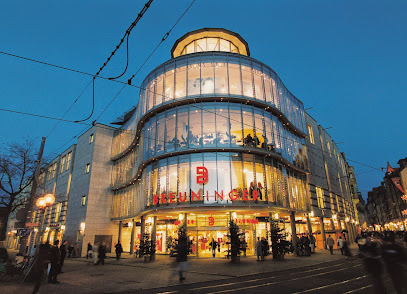
HS - Fashion
0.2 km
Explore HS - Fashion in Erfurt: Your ultimate destination for stylish and affordable clothing in a charming historic setting.
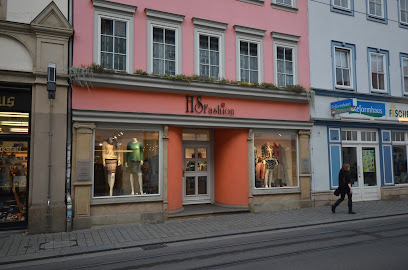
Seidensticker Store Erfurt
0.2 km
Explore the Seidensticker Store in Erfurt for high-quality, stylish clothing that defines elegance and modern fashion in a historic setting.
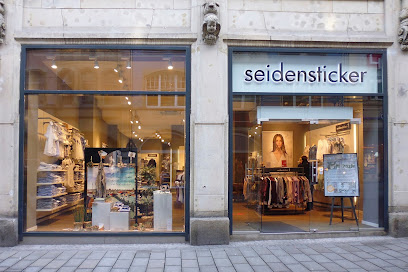
SPLASH OF COLOR
0.2 km
Discover vibrant fashion at Splash of Color in Erfurt, where eclectic styles meet unique designs for a memorable shopping experience.
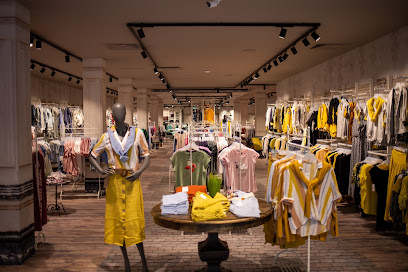
NEW YORKER
0.2 km
Discover the latest fashion trends at NEW YORKER, your one-stop clothing store in Erfurt, featuring stylish apparel and trendy accessories for all ages.
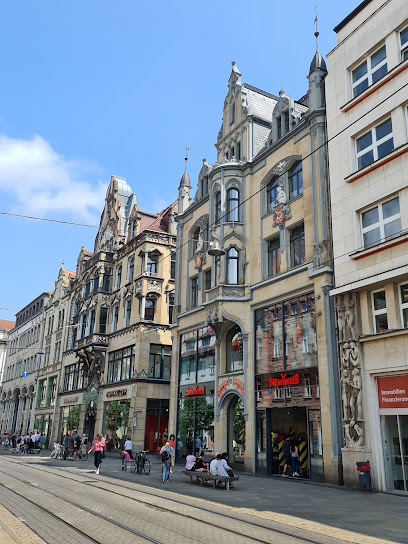
Esprit Store Erfurt
0.2 km
Explore the Esprit Store in Erfurt for stylish clothing and accessories that blend fashion with affordability in a vibrant shopping atmosphere.
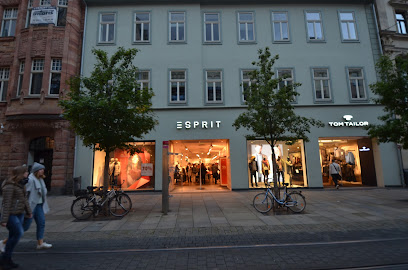
CONTIGO Fairtrade Shop Erfurt
0.2 km
Explore CONTIGO Fairtrade Shop in Erfurt for unique gifts and sustainable products that make a difference.
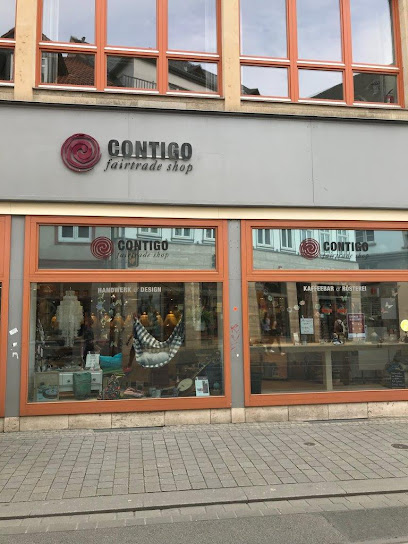
Frankonia Erfurt
0.2 km
Explore the best of hunting gear and outdoor clothing at Frankonia Erfurt, your ultimate destination for outdoor adventures in Germany.
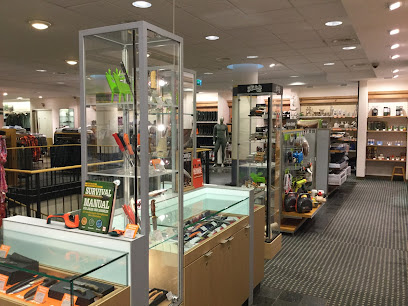
Lindt Boutique Erfurt
0.2 km
Discover the sweet essence of Erfurt at Lindt Boutique, where premium chocolates await every visitor.
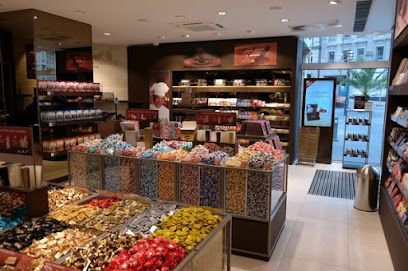
Forum 1
0.2 km
Discover the heart of Erfurt shopping at Forum 1, where fashion, dining, and entertainment meet in a vibrant atmosphere.
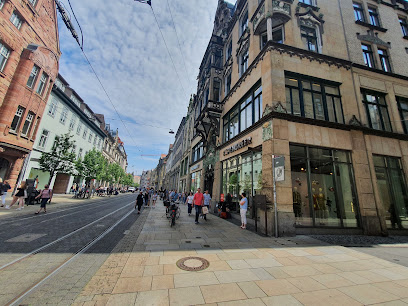
Essential bars & hidden hideouts
HAVANA BAR ERFURT am Hirschgarten
0.3 km
Discover the vibrant HAVANA BAR ERFURT, where Cuban culture meets exquisite cocktails and sports excitement in the heart of Erfurt.

HERZ bar&lounge
0.3 km
Discover the vibrant atmosphere and exquisite cocktails at HERZ Bar & Lounge, a top destination for nightlife in Erfurt.
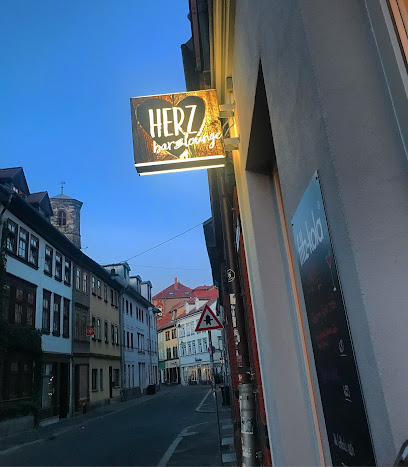
Molly Malone Irish Pub
0.3 km
Immerse yourself in the lively atmosphere of Molly Malone Irish Pub, where authentic Irish culture meets the heart of Erfurt.
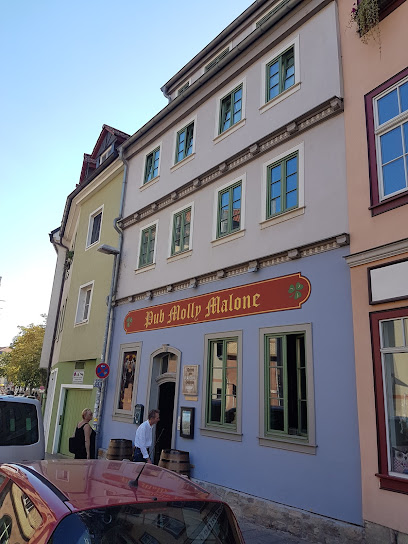
null361
0.3 km
null361 in Erfurt: A vibrant bar and lounge offering exquisite cocktails, live music, and a welcoming atmosphere for an unforgettable night out.
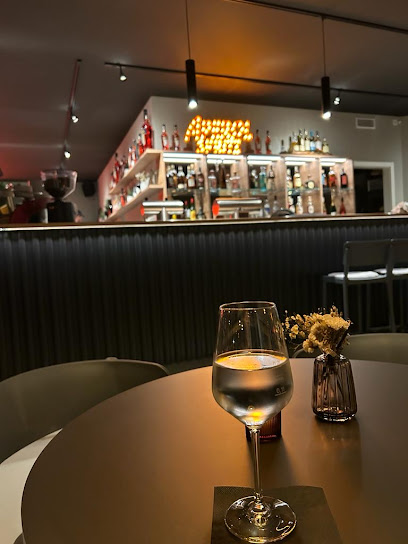
Altstadtkneipe Noah
0.3 km
Discover the heart of Erfurt at Altstadtkneipe Noah, where authentic Thuringian cuisine and a lively gastropub atmosphere await.
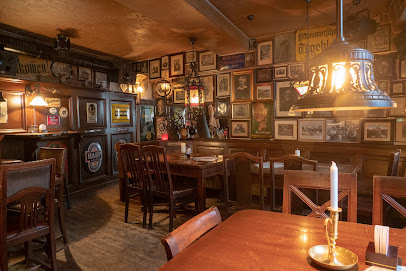
Dubliner Irish Pub
0.3 km
Discover the vibrant atmosphere and authentic Irish cuisine at Dubliner Irish Pub in Erfurt, where every visit feels like a trip to Ireland.
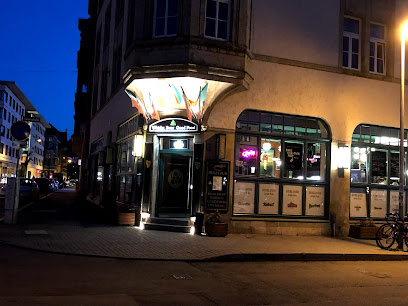
Nerly Cafe-Restaurant-Bar
0.3 km
Discover the culinary delights of Nerly Cafe-Restaurant-Bar in Erfurt, where warm hospitality meets delicious food and vibrant nightlife.
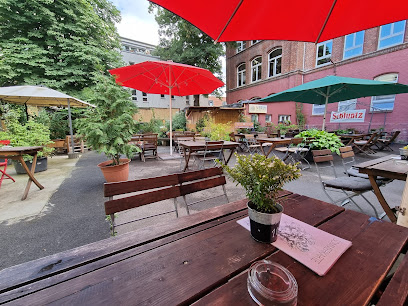
WeinArche UG - Erfurt
0.3 km
Experience the best of local and international wines at WeinArche UG, a cozy wine bar in Erfurt's historic Altstadt.
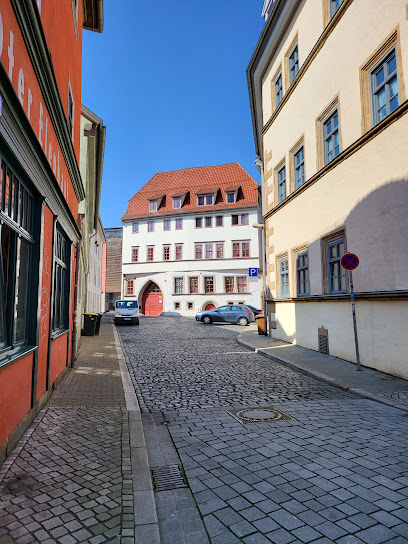
MODERN MASTERS Bar & Lounge
0.4 km
Experience the vibrant nightlife at MODERN MASTERS Bar & Lounge in Erfurt, where exquisite cocktails and a lively atmosphere await you.
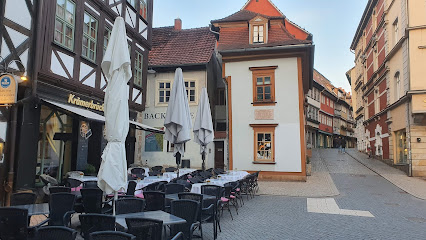
Karibik Bar - Erfurt
0.4 km
Discover Karibik Bar in Erfurt, where tropical vibes meet a lively nightlife, offering a unique selection of cocktails and craft beers.

Hemingway Bar & Lounge - Erfurt
0.4 km
Discover the inviting atmosphere of Hemingway Bar & Lounge in Erfurt, where exceptional drinks meet a charming ambiance for a perfect night out.
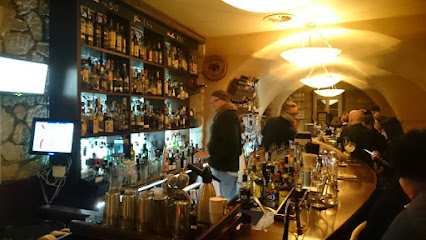
Speicher - Erfurt
0.4 km
Experience the lively atmosphere at Speicher, Erfurt's premier bar, blending local charm with a modern twist for an unforgettable night out.
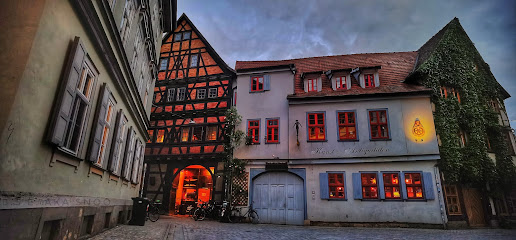
Nummer 9 Lounge
0.5 km
Discover the dynamic blend of relaxation and entertainment at Nummer 9 Lounge, where drinks, games, and good times await in Erfurt.
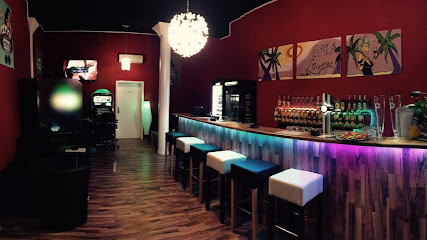
Nummer 9 Lounge - Erfurt
0.5 km
Discover the vibrant Nummer 9 Lounge in Erfurt, where lively entertainment meets a relaxed atmosphere in the heart of the city.

Ckb Cafe Art Bar
0.5 km
Discover the blend of art, coffee, and lively atmosphere at Ckb Cafe Art Bar in Erfurt, where creativity meets relaxation.
